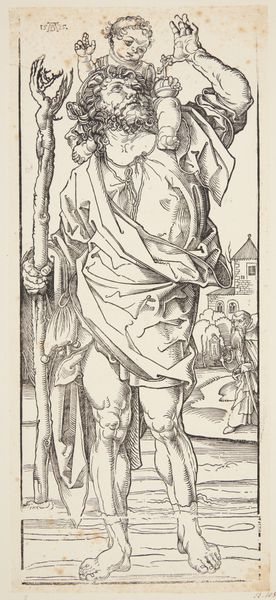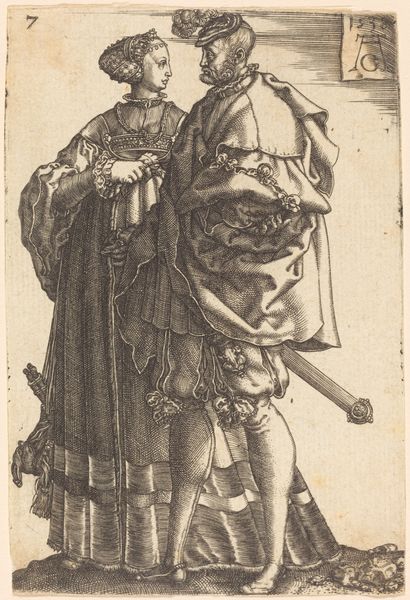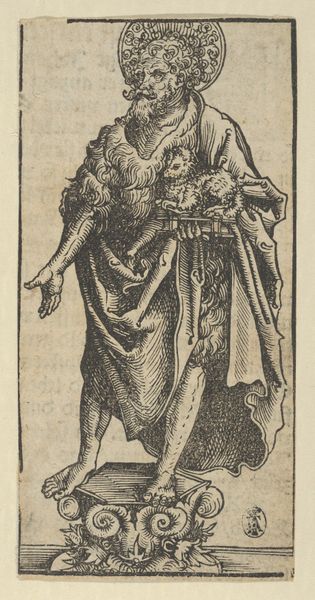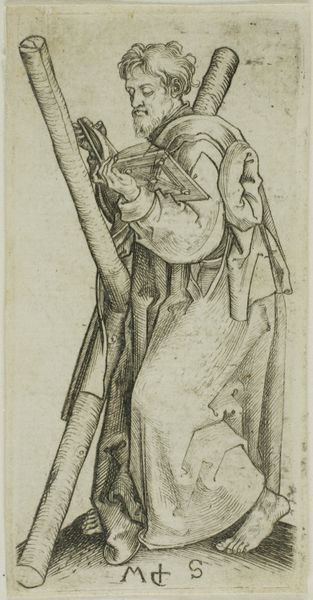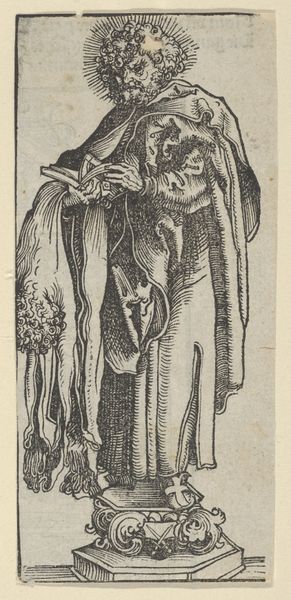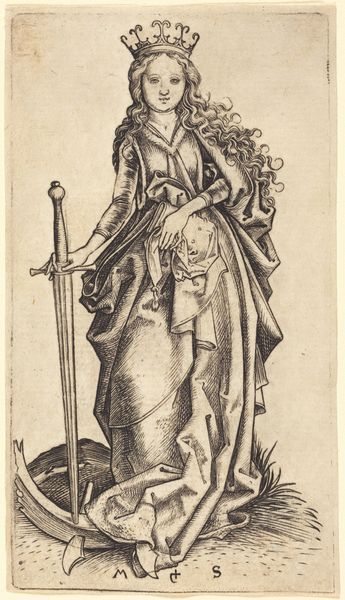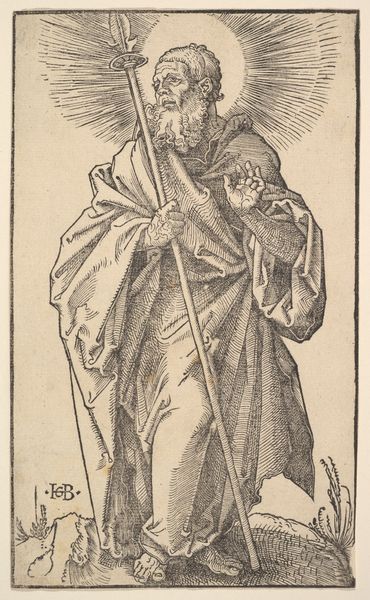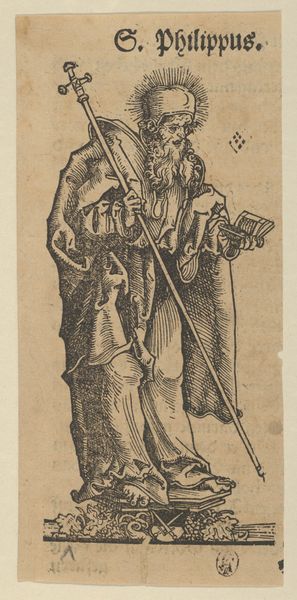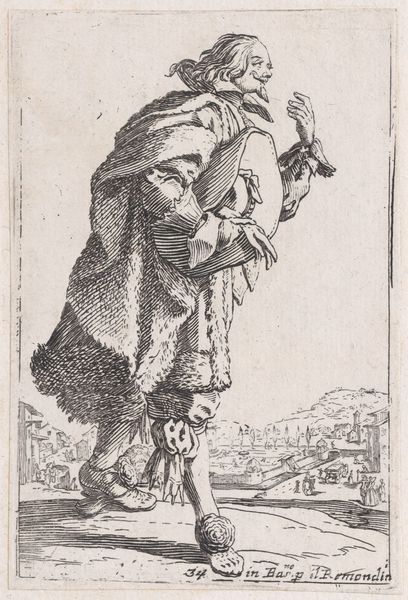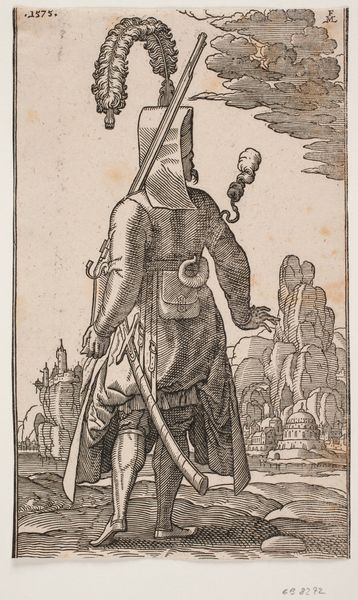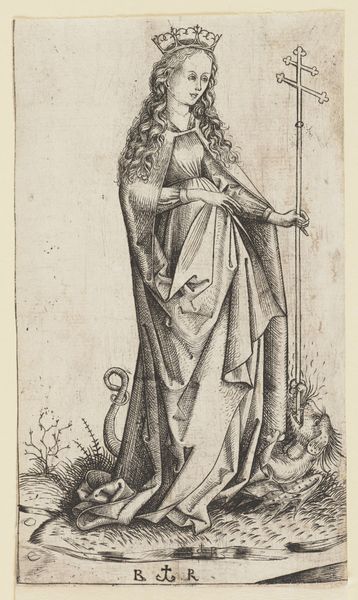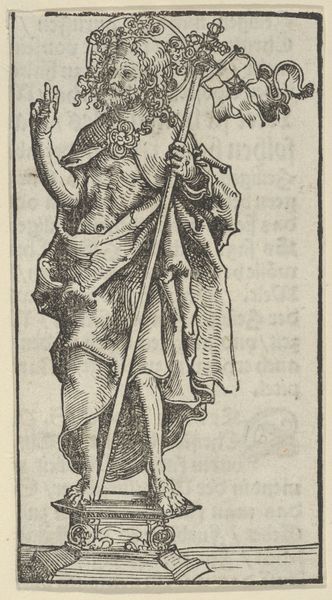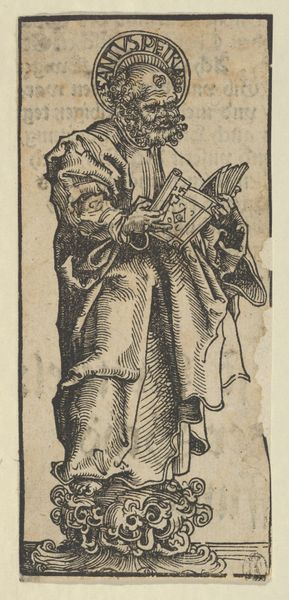
drawing, print, paper, ink, engraving
#
portrait
#
drawing
#
medieval
#
narrative-art
# print
#
landscape
#
classical-realism
#
figuration
#
paper
#
ink
#
romanticism
#
line
#
engraving
Copyright: Public Domain
Editor: Here we have Clemens Aloys Hohwiesner's "Saint Christopher" from 1803, a print using ink on paper. It's a powerful image. Christopher looms large, burdened yet resolute. What kind of symbolism jumps out at you here? Curator: Immediately, I'm drawn to the duality: the figure’s evident strength juxtaposed with the child perched on his shoulders. Notice how Christ, as a child, carries the orb—the weight of the world made manifest. The artist reminds us that true strength often lies not in brute force, but in service and acceptance of burden. The landscape in the background echoes this. What stories do you imagine lie within it? Editor: The landscape feels like a memory, hazy and distant. I suppose it grounds the figure in a specific time, adding a historical element. Why depict Christopher so often carrying a child? Curator: Saint Christopher's story evolved over centuries, shifting from a fearsome, dog-headed giant to the gentle protector we see here. The image resonates because it embodies the journey, the transformation from raw power to compassionate strength. He bears the weight of innocence and divine potential. Does this interpretation affect how you perceive the artwork’s mood? Editor: Definitely. I initially saw it as just a powerful figure, but understanding the context, I now perceive humility and purpose. The artist really packed so many meanings into one picture. Curator: Indeed. Hohwiesner uses the engraving to weave together layers of cultural memory and spiritual meaning, reminding us that images hold the power to transform belief across generations. Editor: I'll certainly look at similar pieces in a new way from now on. Thanks for opening my eyes!
Comments
No comments
Be the first to comment and join the conversation on the ultimate creative platform.
